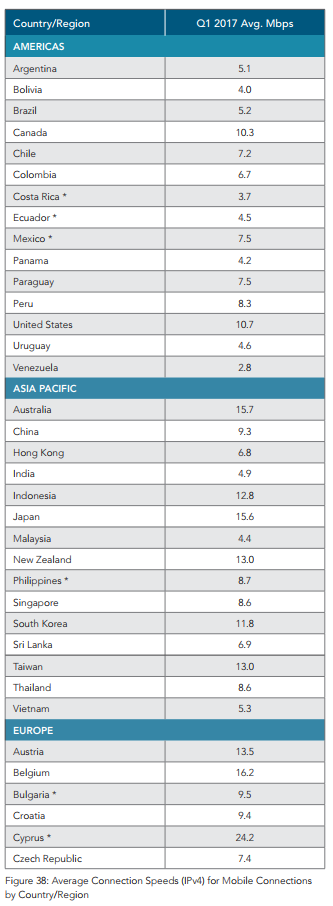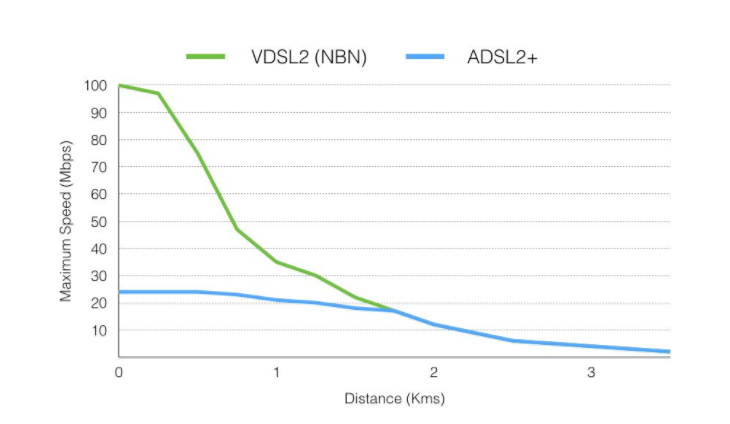Loading… why Australia’s internet speeds are lagging behind
Published 20-JUL-2017 11:10 A.M.
|
4 minute read
Hey! Looks like you have stumbled on the section of our website where we have archived articles from our old business model.
In 2019 the original founding team returned to run Next Investors, we changed our business model to only write about stocks we carefully research and are invested in for the long term.
The below articles were written under our previous business model. We have kept these articles online here for your reference.
Our new mission is to build a high performing ASX micro cap investment portfolio and share our research, analysis and investment strategy with our readers.
Click Here to View Latest Articles
If you thought your internet connection was terrible – well, you may not be imagining it.
Akamai’s State of Internet report, which ranks every country’s internet speed, placed Australia 50th in the world.
The quarterly report, released last month, ranks countries based on several tests. These include peak internet speed, average internet speed and overall internet speed change.
Australia performed poorly across the board, particularly against other Asia/Pacific nations.
When breaking down average mbps, Australia (11.1mbps) lost out to neighbour New Zealand (14.7mbps) – and fell well behind region leader South Korea (28.6mbps).
To put this in perspective, an ultra HD video on Netflix requires around 25mbps to enable uninterrupted streaming.
Australia performs even worse in average peak Mbps, which explores the fastest internet speed recorded or achievable in any given country.
Australia’s paltry 55.6mbps average peak speed ranks 12th in the Asia/Pacific region – despite a 27% increase since last year.
To complicate the theory, however, the report also examines average mobile data speed – a category where Australia’s average speed beats that of Canada, China and the United States, coming in first in Asia/Pacific at an average of 15.7mbps.
Turns out it’s not just the connection speeds that are inconsistent.
That’s why we’re getting the NBN... right?
The use of outdated infrastructure has led to the embarrassing internet predicament Australia faces today.
The answer, we’ve been told, is the National Broadband Network – Australia’s largest infrastructure project in history, tasked with supercharging the country’s internet speeds up to 100mbps.
Conceived under the first Rudd Government, the NBN was pitched at an initial cost of around A$40 billion, which would see houses connected to the exchange via optic fibre.
The project changed direction under the Abbott Government in 2013.
Then Communications Minister Malcolm Turnbull announced his Multi-Technology Mix (MTM), which opted for fibre to the node (FTTN) as the preferred technology in regions that already had underlying copper wire. This was a radical departure from the initial fibre to the premises (FTTP) setup for all households.
Already, upgrades to the FTTN section of the network are on the cards. Last month Peter Ryan, NBN Co’s chief network engineer officer, broached the somewhat taboo topic.
“I do accept that there has been some problems recently,” he said.
“We are contemplating right now as we roll out the network the ability to upgrade the network not only to meet the needs of Australians today but to future-proof the needs of Australians into decades ahead.
“We know that the technology that we are deploying is absolutely upgradeable to meet needs of Australians for the next few decades.”
FTTP: The further you are from the node – the poorer your connection will be
But that’s hard to swallow, considering that for the estimated 30-40% of homes connected to the NBN via FTTN, a complete overhaul of existing infrastructure will be required to achieve the speeds being promised.
It’s safe to say not everyone is convinced, with Laurie Patton, executive director of Internet Australia, labelling the NBN “a dud”.
“The problem we are facing is that we are now building a network based on ageing copper wires that will need to be replaced within five to 10 years of completion of project,” he said.
Patton also went on to describe the upcoming FTTN rollout in metro areas as a nightmare, adding “Internet Australia has warned the government that the level of complaints is likely to skyrocket in the next 12 months”.
So if watching Netflix on a Friday night is an exercise in long-suffering ‘buffering’, it could be that your copper is simply too slow – and the ensuing bottleneck has congested the local exchange or node.
But it’s not all bad news
Despite how frustrating the NBN’s performance has been, there are some positives here.
Mobile connection speed is among the best in the world and will continue to climb higher after Telstra announced a $3 billion investment into its mobile network.
In addition, while only 19% of Australians have access to an average internet speed above 15mbps, that figure is a 90% increase from last year.
Our development may not be keeping pace with other nations right now, but any progress is better than none.
The NBN may have taken shortcuts the first time around, and taken us on a frustrating detour, but with the mistakes now acknowledged the future is looking, well, faster.
General Information Only
S3 Consortium Pty Ltd (S3, ‘we’, ‘us’, ‘our’) (CAR No. 433913) is a corporate authorised representative of LeMessurier Securities Pty Ltd (AFSL No. 296877). The information contained in this article is general information and is for informational purposes only. Any advice is general advice only. Any advice contained in this article does not constitute personal advice and S3 has not taken into consideration your personal objectives, financial situation or needs. Please seek your own independent professional advice before making any financial investment decision. Those persons acting upon information contained in this article do so entirely at their own risk.
Conflicts of Interest Notice
S3 and its associated entities may hold investments in companies featured in its articles, including through being paid in the securities of the companies we provide commentary on. We disclose the securities held in relation to a particular company that we provide commentary on. Refer to our Disclosure Policy for information on our self-imposed trading blackouts, hold conditions and de-risking (sell conditions) which seek to mitigate against any potential conflicts of interest.
Publication Notice and Disclaimer
The information contained in this article is current as at the publication date. At the time of publishing, the information contained in this article is based on sources which are available in the public domain that we consider to be reliable, and our own analysis of those sources. The views of the author may not reflect the views of the AFSL holder. Any decision by you to purchase securities in the companies featured in this article should be done so after you have sought your own independent professional advice regarding this information and made your own inquiries as to the validity of any information in this article.
Any forward-looking statements contained in this article are not guarantees or predictions of future performance, and involve known and unknown risks, uncertainties and other factors, many of which are beyond our control, and which may cause actual results or performance of companies featured to differ materially from those expressed in the statements contained in this article. S3 cannot and does not give any assurance that the results or performance expressed or implied by any forward-looking statements contained in this article will actually occur and readers are cautioned not to put undue reliance on forward-looking statements.
This article may include references to our past investing performance. Past performance is not a reliable indicator of our future investing performance.




